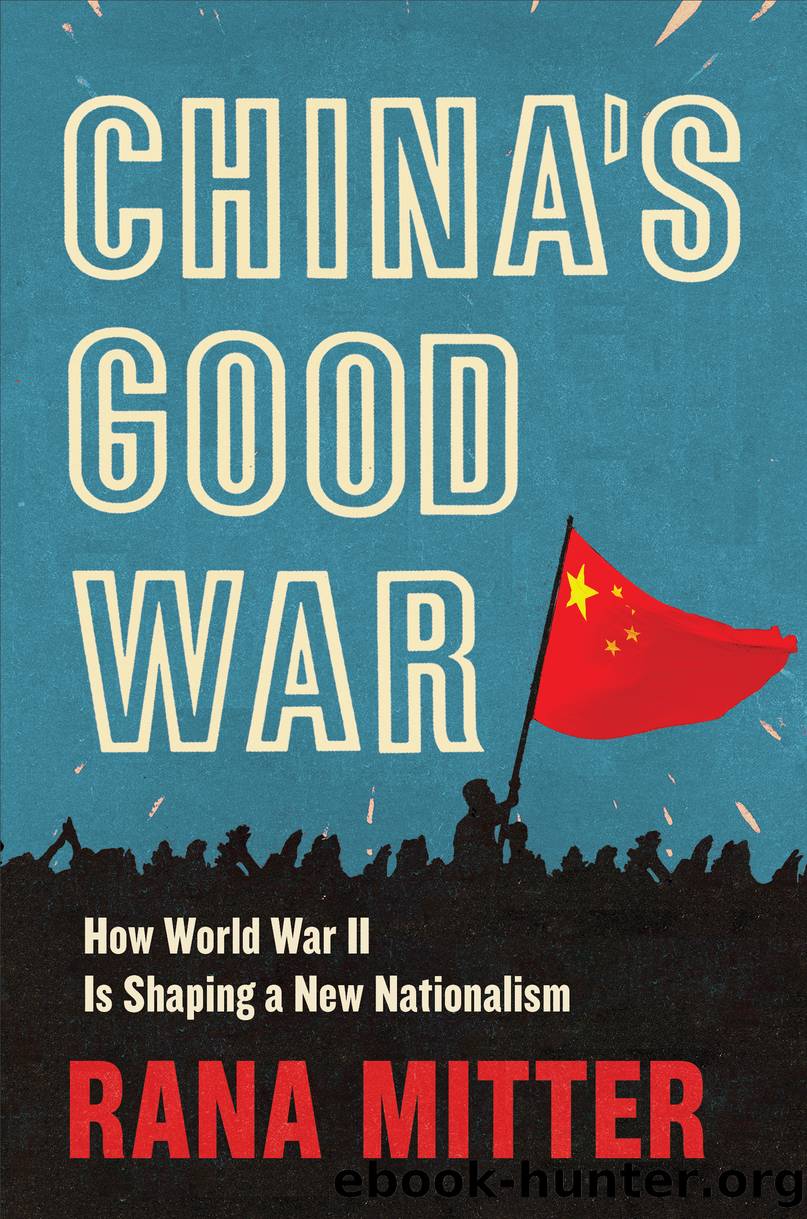China's Good War by Rana Mitter

Author:Rana Mitter
Language: eng
Format: epub
Publisher: Harvard University Press
The Guofen Phenomenon
The skeptical viewpoint expressed by Cui Yongyuan is easier to find online than onscreen. One particular manifestation is the phenomenon known as the Guofen, or âGuomindang [Nationalist Party] fansâ (the character fen ç² is meant to be an approximation of the English word âfanâ). Guofen are online, somewhat gonzo, supporters of the former Nationalist government. In 2015, Radio Free Asia interviewed one such figure, a woman named Wang Xueli, whose online name was Air (Kongqi) and who styled herself the leader of the Chinese mainland âRepublican constitution faction.â Wang was one example of a phenomenon of the Minguo re (Republican craze), which had become fashionable particularly among well-educated urban types who wanted to find an expressive way to communicate their skepticism of the government.23 Air (a pseudonym she chose because she believed that air is the freest material that exists) was clearly at the more active end of this phenomenon, much of which was played out on social media. She claimed to be an advocate not only of Sun Yat-senâs Three Peopleâs Principles but also of the 1946 constitutionâthe troubled, only partially democratic constitution instituted by the Nationalists in the midst of Chinaâs civil warâarguing that â âthe Republican Chinese constitutionâ means the constitutional government of the Republic of China,â which she regarded as âdemocraticâ in contrast with that of the CCP. Wangâs group had emerged in 2003 after online clashes with a rival group, whom they called âMaofenâ (i.e., âMao fansâ). Wang claimed that her group had been boosted by a visit to the mainland in 2005 by Lien Chan, who at the time was chairman of the Nationalist Party based on Taiwan. During that visit, Wang said, Guofen came to Nanjing from all around China to visit Zijinshan, the site of the tomb of Sun Yat-sen, the founder of the Republic, as well as the Republican-era presidential palace, and âthere was a second high tide in 2006, when we rethought the history of the War of Resistance.â âAt the same time,â she noted, âwe found more and more smart folks to propagandize for Republican history, even including more and more sympathizers within the system joining us.â24 Their main âbattlefieldâ was on the QQ SMS system, but in 2011â2012 more material went up on the Chinese weblog system Weibo.
The Guofen did not emerge from thin air, so to speak. In the early 2000s there was increasing attention to the fenqing (âangry youthâ; the fen is a different character from that in Guofen), young Chinese nationalists who spoke out strongly on patriotic issues and even criticized their own government for being overly soft on Japan.25 One such youth, Guo Quan, began his activism by investigating the Nanjing Massacre and obtained an academic position to pursue this work. Within a few years, he had become a full-blown critic of the government, and in 2008 he was arrested for advocating multi-party democracy.26
The Guofen exist in uneasy opposition to the government. While gauging overall numbers is impossible in the restrictive environment
Download
This site does not store any files on its server. We only index and link to content provided by other sites. Please contact the content providers to delete copyright contents if any and email us, we'll remove relevant links or contents immediately.
| Africa | Americas |
| Arctic & Antarctica | Asia |
| Australia & Oceania | Europe |
| Middle East | Russia |
| United States | World |
| Ancient Civilizations | Military |
| Historical Study & Educational Resources |
The Story of China by Michael Wood(927)
Mr. Selden's Map of China by Timothy Brook(775)
Philippines--Culture Smart! by Culture Smart!(669)
Heroic Hindu Resistance To Muslim Invaders (636 AD to 1206 AD) by Sita Ram Goel(655)
Akbar: The Great Mughal by Ira Mukhoty(651)
The Meaning of India by Raja Rao(631)
Vedic Physics: Scientific Origin of Hinduism by Raja Ram Mohan Roy(624)
Food of India by unknow(617)
Banaras by Diana L. Eck(613)
India--Culture Smart! by Becky Stephen(602)
First Platoon by Annie Jacobsen(601)
China Unbound by Joanna Chiu(601)
Mao's Great Famine: The History of China's Most Devastating Catastrophe, 1958-1962 by Frank Dikötter(594)
North of South by Shiva Naipaul(590)
Insurgency and Counterinsurgency by Jeremy Black(564)
How to Be a Modern Samurai by Antony Cummins(563)
A History of Japan by R.H.P. Mason & J.G. Caiger(561)
The Genius of China: 3,000 Years of Science, Discovery, and Invention by Robert Temple(561)
The Digital Silk Road by Jonathan E. Hillman(550)
